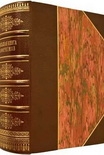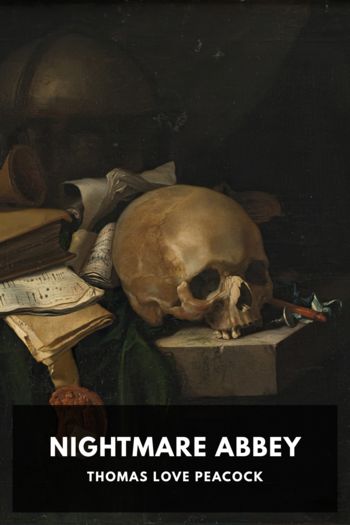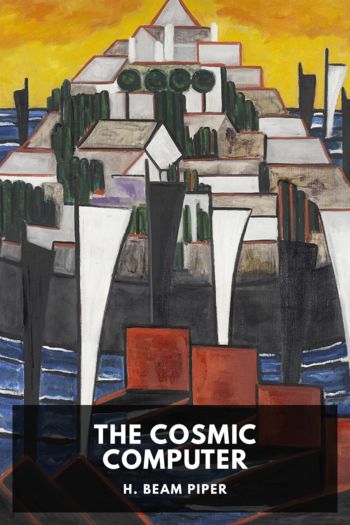Gluck, Diana Souhami [good novels to read in english txt] 📗

- Author: Diana Souhami
Book online «Gluck, Diana Souhami [good novels to read in english txt] 📗». Author Diana Souhami
She ran into trouble with the quality of this canvas, a presage of the battle she was to wage for decades with the manufacturers of artists’ materials. It was grainy and full of knots, the paint sank in and became dead, and subtle differences of colour and texture got blurred.
She finished the cornucopia of pomegranates begun in Hammamet and the head of the Arab boy. Mabel said he looked better without a cap, so bareheaded he remained. She finished the charcoal drawing ‘In Aid Of …’, lampooning a society gathering for whom a charity occasion is just another cocktail party. She showed it only to Molly Mount Temple and Nesta and swore them to secrecy because many of the people in it – the women who look like hens and the bored men – were apparently recognizable.
She did a quirky picture of a lovelorn rhinoceros, which she titled ‘Frustration’. He, like Oscar the faience bull exhibited in her 1932 exhibition, was bought by Molly and hung along with Gluck’s portrait of her at Broadlands. After Molly died the pictures were disposed of by the Mountbatten family, with whom she had not been popular.8 The portrait turned up in 1973 in the cellar of Molly’s sister’s house. A friend wanted to buy it from her, but she gave it to him, remarking that she already had one portrait of Molly and one was enough.9
On a Monday in February 1937 Gluck and Nesta drove to Southease, a village in East Sussex in the valley of the river Ouse. They had a picnic in the car and Gluck began a landscape of the river at a point where it changes course, as she felt she was herself changing course, and flows to the open sea. She called it ‘Sulky Spring, Southease’.
In June they went to Poole in Dorset, to an island they called ‘their Shangri La’, and Gluck painted one of her best seascapes, ‘The Sands Run Out, Poole Harbour’, looking inland from the sea with the sun breaking through the rain. Nesta had various broadcasting commitments in London, talks and poetry readings with the BBC, so she travelled back and forth on the train. ‘Marvellous and happy day, work at big picture.’ ‘Lovely day, bad weather. Cannot work.’ were typical of Gluck’s diary entries at this time.
In August, while staying down in Plumpton, she spent two weeks in the open air painting Falmer Church and graveyard: the church, its reflection in the water and the wall and towpath form the shape of a cross. Nesta spent several days with her and wrote a twenty-page sketch called A Painter’s Day about interruptions from trippers of a different social class:
MAN: Is’y! Look at that now. ’e’s pynting the church.
SECOND MAN: SO’e is now. And the water.
MAN: Wouldn’t I blinkin’ well like to be a painter instead of drivin’ this blinkin’ bus.
SECOND MAN: S’pose’e’ll get pots of money for that.
MAN: That’s right. Pots. Some people’s got all the luck.
Work and fun merged. There were games of badminton, teatimes spent lazing in the punt on the lake, enough days and nights together to keep dissatisfaction at bay and too much to do to be jealous for long. Everything was geared towards making a success of her show.
As in her 1932 exhibition she again created The Gluck Room at The Fine Art Society and as in 1932 this led to a great deal of fuss. Ernest Dawbarn, the director, kept out of the way and simply established the dates available for installation and when she must have the place cleared. A Mr Westbrook of the Camden Joinery Mill, Camden Town, got the job of constructing the room. He was experienced at building exhibition stands and displays, and confident of his work. He had no appetite for lengthy correspondence.
Gluck perfected the design used in 1932. The room, measuring approximately thirty by fourteen feet, and the frames, were this time to be in grey alder wood. Seven foot high pilasters, stepped vertically in the same way as her frames, divided it into bays and a boxed skirting, one foot six inches high and ten inches wide, ran round the circumference. A four foot six inch wide door separated The Gluck Room from the rest of the gallery.
Her relationship with her framemaker, John Footman, at the antique furniture dealers and restorers, Louis Koch in Cleveland Street, was good. If people got on amicably with Gluck over her business affairs, they were open with her, realized she was needy, did their best and were blessed with exceptional patience. As Mrs Guy, who did housework for Gluck and Edith Heald in later years when they lived in Steyning, Sussex, put it ‘You could lead her, but you couldn’t drive her. She had to think it was her idea.’
Mr Westbrook was a busy carpenter. The contract for The Gluck Room, though interesting and worth some £150, presented no particular problems. Gluck did. The colour of the alder was, she said, wrong, some of the fittings were an eighth of an inch out, there was confusion about the price of additional items and labour and the meaning of remarks that were or were not made. By the end of it all he lost his temper:
November 30th 1937
Dear Miss Gluck
Many thanks for your unlimited correspondence. I have wasted enough time and money on your job so far. I think it time I called a halt. Definitely your invoice stands as I have forwarded viz: a total of £148/l5/6d. This sum you either pay or tell me you will not.
When you care to explain to me why you broke your part of the contract by refusing to have my name





Comments (0)